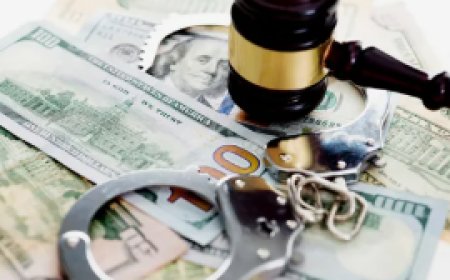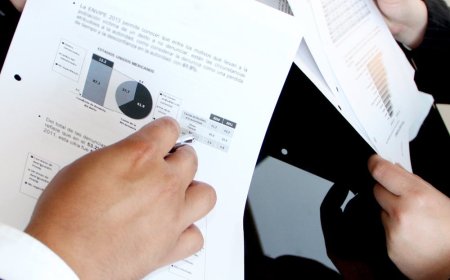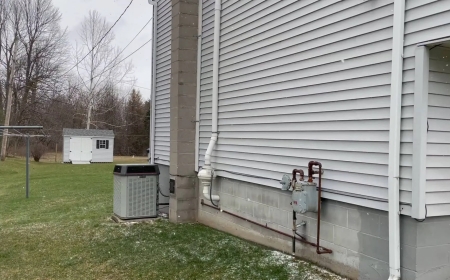How To Recycle Christmas Trees Dallas Drop-Off Spots
How to Recycle Christmas Trees in Dallas: Drop-Off Spots and Sustainable Practices Every year, millions of Christmas trees across the United States are discarded after the holiday season, often ending up in landfills where they contribute to methane emissions and wasted organic material. In Dallas, a growing number of residents are choosing to recycle their Christmas trees instead — turning what w
How to Recycle Christmas Trees in Dallas: Drop-Off Spots and Sustainable Practices
Every year, millions of Christmas trees across the United States are discarded after the holiday season, often ending up in landfills where they contribute to methane emissions and wasted organic material. In Dallas, a growing number of residents are choosing to recycle their Christmas trees instead — turning what was once a festive centerpiece into nutrient-rich mulch, erosion control material, or wildlife habitat. Recycling your tree isn’t just environmentally responsible; it’s a simple, community-driven act that supports local sustainability efforts. This guide provides a comprehensive, step-by-step roadmap for Dallas residents on how to properly recycle their Christmas trees through official drop-off locations, best practices, essential tools, real-world examples, and answers to frequently asked questions.
Step-by-Step Guide
Recycling your Christmas tree in Dallas is a straightforward process when you follow these clear, actionable steps. Whether you live in North Dallas, South Dallas, or a surrounding suburb like Irving, Richardson, or Garland, these instructions apply universally across the city’s recycling network.
Step 1: Remove All Decorations and Non-Natural Materials
Before bringing your tree to any drop-off location, it’s critical to remove all artificial elements. This includes ornaments, tinsel, lights, tree stands, plastic snow, and any metal or plastic hooks. These materials contaminate the recycling stream and can damage industrial chippers used to process trees. Even small items like glitter or ribbon can interfere with the composting process. Take a few minutes to carefully strip the tree of everything that isn’t natural wood and needles. This step ensures your tree qualifies for recycling and helps maintain the integrity of the final mulch product.
Step 2: Check the City of Dallas Recycling Calendar
The City of Dallas Office of Waste Reduction and Recycling operates an annual Christmas tree recycling program that typically runs from early January through late January or early February. Visit the official website at dallascityhall.com and navigate to the “Solid Waste” or “Recycling” section. Look for the “Holiday Tree Recycling” page, which will list exact dates, times, and locations for the current year’s drop-off program. The calendar is updated annually, so even if you recycled last year, always verify the current schedule.
Step 3: Identify Your Nearest Drop-Off Location
Dallas offers multiple drop-off sites across its 250+ square miles to ensure accessibility for all residents. The most common locations include:
- Reedy Creek Improvement District (RCID) Drop-Off – Located near the intersection of Greenville Avenue and Belt Line Road, this site is ideal for residents in East Dallas and Far North Dallas.
- Trinity River Audubon Center – Situated in South Dallas near the Trinity River, this site accepts trees and also offers educational tours on urban ecology.
- City of Dallas Solid Waste Transfer Stations – Multiple locations including the one at 10700 S. Hampton Road (South Dallas) and 11700 N. Central Expressway (North Dallas) serve as year-round recycling hubs.
- Local Parks and Recreation Centers – Parks such as White Rock Lake Park, Klyde Warren Park, and Fair Park often host temporary collection bins during the recycling window.
Always confirm hours of operation before visiting. Most drop-off sites are open from 8 a.m. to 6 p.m., seven days a week during the recycling period, but some may close early on holidays or during inclement weather.
Step 4: Transport Your Tree Safely
When transporting your tree, ensure it doesn’t obstruct your view or create a safety hazard. If your tree is taller than your vehicle, secure it with ropes or straps to the roof rack or trailer. Never tie it to the bumper or let it drag on the ground. If you’re using a car without a roof rack, place the tree inside the vehicle with the trunk open and the rear window secured using a mesh cover or blanket to prevent needle debris from scattering. For larger trees, consider borrowing a pickup truck from a neighbor or using a local delivery service that offers tree haul-away options — many are now partnering with the city for eco-friendly disposal.
Step 5: Drop Off at Designated Site
Upon arrival at your chosen drop-off location, follow the signs to the designated tree collection area. Most sites have clearly marked lanes or bins labeled “Christmas Trees Only.” Do not attempt to place your tree in general recycling or yard waste bins — they are processed separately. Simply unload your tree and leave it in the designated pile. Volunteers or city staff may be present to assist, but no registration or fee is required. Trees are collected and transported to a central processing facility within 48 hours.
Step 6: Confirm Your Tree Was Processed
After dropping off your tree, you can track its journey. The City of Dallas publishes monthly sustainability reports that include metrics on how many trees were recycled and how much mulch was produced. You can also sign up for the city’s “Green Dallas” newsletter to receive updates on where recycled mulch is being used — often in public parks, school gardens, and community landscaping projects. Some sites even offer free mulch pickup in late February or March for those who participated in the recycling program.
Best Practices
Recycling your Christmas tree isn’t just about dropping it off — it’s about doing it right. Following best practices ensures maximum environmental benefit and prevents common mistakes that undermine the entire recycling effort.
Do Not Burn Your Tree
While it may be tempting to burn your tree in the backyard or at a campsite, this is strongly discouraged in Dallas. Open burning of Christmas trees releases toxic smoke, particulate matter, and carbon monoxide — especially if the tree has been treated with fire retardants or sprayed with artificial snow. Dallas County has strict air quality regulations, and burning holiday trees can result in fines. Recycling is not only safer but also far more beneficial to the environment.
Do Not Mix with Other Yard Waste
Christmas trees are denser and harder than typical yard trimmings like leaves or grass clippings. Mixing them with other materials can clog chippers and slow down processing. Always keep your tree separate. If you have other yard waste, dispose of it separately through your regular curbside collection or at a dedicated yard waste drop-off.
Use a Tree Stand That’s Easy to Remove
If you’re planning ahead for next year, invest in a tree stand with a removable water reservoir and minimal metal components. Avoid stands with large metal plates or screws — these are harder to detach and often end up contaminating the recycling stream. Plastic or wooden stands are preferable and easier to recycle or reuse.
Consider a Live Tree with Roots
If you’re environmentally conscious and have space, consider purchasing a live Christmas tree with a root ball. These trees can be planted in your yard after the holidays, eliminating the need for recycling altogether. The City of Dallas partners with local nurseries to offer discounted live trees each December. Check with the Dallas Arboretum or the Texas Nursery and Landscape Association for participating vendors.
Plan Ahead to Avoid Last-Minute Stress
Many residents wait until the day after New Year’s to dispose of their trees, leading to overcrowded drop-off sites and long lines. Plan your drop-off for the first week of January. Early submission ensures quicker processing and helps reduce congestion. If you’re unsure about dates, set a calendar reminder for December 28th to review the official recycling schedule.
Encourage Community Participation
Recycling becomes more impactful when it’s a collective effort. Talk to neighbors, share information on social media, or organize a block-wide tree drop-off day. Some Dallas neighborhoods have formed “Tree Teams” that coordinate group pickups and drop-offs. This not only reduces individual carbon footprints but also builds community resilience and environmental awareness.
Tools and Resources
Successfully recycling your Christmas tree in Dallas requires access to the right tools and reliable resources. Below is a curated list of essential tools and digital resources to help you navigate the process efficiently.
Essential Tools
- Pruning Shears or Loppers – Useful for trimming large branches if your tree is too tall for transport or if you’re cutting it into smaller sections for easier handling.
- Heavy-Duty Trash Bags (for decorations) – Use these to collect and dispose of ornaments, lights, and tinsel separately. Many local hardware stores offer biodegradable options.
- Roof Rack or Tree Strap System – If you don’t own a truck, consider renting a roof rack from a local auto parts store like AutoZone or O’Reilly Auto Parts. Tree straps are inexpensive and prevent damage to your vehicle.
- Reusable Tree Storage Bag – If you plan to use a live tree next year, invest in a breathable, reusable tree storage bag to keep the root ball moist and protected.
Official Resources
- City of Dallas Waste Reduction & Recycling Website – www.dallascityhall.com/solidwaste – The primary source for drop-off locations, dates, and program updates.
- Dallas Tree Recycling Map (Interactive) – An online map that shows real-time availability of drop-off sites during the recycling period. Updated daily during January.
- Texas Commission on Environmental Quality (TCEQ) – www.tceq.texas.gov – Offers statewide guidelines on organic waste recycling and environmental compliance.
- Dallas Arboretum and Botanical Garden – Hosts educational workshops on tree recycling and sustainable landscaping. Visit their events calendar for free public seminars.
- Green Dallas Mobile App – Available on iOS and Android, this app sends push notifications about recycling deadlines, weather delays, and mulch pickup events.
Community and Nonprofit Partners
Several nonprofit organizations in Dallas actively support tree recycling efforts:
- Keep Dallas Beautiful – Volunteers assist at drop-off sites and organize tree recycling awareness campaigns. You can sign up to help or request educational materials for schools.
- Urban Forestry Initiative Dallas – Focuses on urban tree canopy expansion. They repurpose recycled tree mulch in underserved neighborhoods to improve soil health and reduce heat islands.
- Dallas Nature Center – Offers free mulch to residents who recycle their trees and participate in a short sustainability quiz online.
Local Businesses That Support Recycling
Some local businesses go beyond compliance — they actively promote tree recycling:
- Home Depot (North Dallas and South Dallas locations) – Offers free tree drop-off in January and sells recycled mulch made from Dallas’ collected trees.
- Whole Foods Market (University Park and Preston Forest) – Partners with the city to provide compost bins and educational flyers during the holiday season.
- Local Christmas Tree Farms – Farms like Texas Christmas Trees in Rockwall and Hill Country Christmas Trees in Cedar Hill offer pickup services for a small fee and donate a portion of proceeds to urban forestry programs.
Real Examples
Real-world examples illustrate how Dallas residents are making a tangible difference through tree recycling. These stories highlight community impact, innovation, and personal motivation.
Example 1: The Johnson Family – From Living Room to Mulch
The Johnsons, residents of East Dallas, have recycled their Christmas tree every year since 2018. Last January, they dropped off their 7-foot fir at the Trinity River Audubon Center. The tree was chipped and turned into mulch, which was later used to landscape the center’s native plant garden. The family received a free bag of mulch in March and used it to improve the soil around their vegetable garden. “It’s not just about getting rid of a tree,” says Maria Johnson. “It’s about giving it a second life. We feel connected to the land now.”
Example 2: Oak Cliff Elementary School’s Tree Recycling Drive
In 2023, Oak Cliff Elementary launched a school-wide Christmas tree recycling campaign. Each student was given a recycling card to bring home. Families who participated received a “Green Star” sticker for their front door. Over 120 trees were collected from the neighborhood, and the school hosted a “Mulch & Learn” day where students helped spread the recycled mulch in the school’s butterfly garden. The project was featured on Channel 8 News and inspired three other schools to adopt similar programs.
Example 3: The North Dallas Tree Collective
A group of neighbors in the Preston Hollow area formed the North Dallas Tree Collective in 2022. They coordinate weekly drop-offs to the City’s Hampton Road transfer station, carpooling with up to 15 families at a time. They’ve also created a shared Google Sheet to track participation and distribute free mulch. Since its founding, the group has recycled over 400 trees and reduced neighborhood waste by an estimated 12 tons. “We didn’t want to wait for the city to do it,” says group founder Robert Kim. “We just started doing it together.”
Example 4: A Business’s Eco-Initiative – The Cedar Springs Hotel
The Cedar Springs Hotel in Uptown Dallas stopped purchasing artificial trees in 2021 and now sources real trees from local farms. After the holidays, they transport their trees to the city’s recycling program and donate the resulting mulch to the nearby Klyde Warren Park. They also display a digital counter in their lobby showing the total number of trees recycled and the equivalent CO2 emissions saved. Guests often comment on the initiative, and the hotel now receives higher ratings on eco-conscious travel platforms.
FAQs
Can I recycle a fake Christmas tree in Dallas?
No, artificial trees made of plastic and metal cannot be recycled through the city’s Christmas tree program. These items are considered e-waste or plastic waste and should be taken to a designated electronics recycling center. Some retailers like Best Buy or Staples accept old artificial trees for recycling, but check their policies first. If your artificial tree is still in good condition, consider donating it to a local shelter, church, or nonprofit organization.
What if I miss the official drop-off window?
If you miss the January recycling period, you can still dispose of your tree responsibly. The City of Dallas accepts natural Christmas trees as yard waste during regular curbside collection — but only if they are cut into 4-foot sections and tied securely with twine. Do not place them in plastic bags. Alternatively, private haulers like Junk King or 1-800-GOT-JUNK? offer eco-friendly tree removal services that partner with local composting facilities.
Is there a fee to recycle my tree?
No. Recycling your Christmas tree through the City of Dallas program is completely free. Be wary of any service that charges a fee for tree drop-off — this is not standard practice. Legitimate city-run sites do not require payment, registration, or proof of residency.
Can I drop off a tree with a metal stand still attached?
No. Metal stands must be removed before drop-off. They damage chipping equipment and contaminate the mulch. If the stand is bolted or screwed in, use a wrench or screwdriver to detach it. If you’re unsure how, ask a volunteer at the drop-off site — they can assist you on-site.
Can I recycle a tree that has been sprayed with artificial snow?
It’s best to avoid recycling trees treated with artificial snow or glitter. These chemicals can interfere with composting and may introduce toxins into the mulch. If your tree has been sprayed, remove as much of the coating as possible with a brush or cloth. If the coating is heavy, it’s safer to dispose of the tree as regular trash rather than risk contaminating the recycling stream.
How is the recycled tree turned into mulch?
Collected trees are transported to a central processing facility where they are fed into industrial chippers that grind them into fine wood chips. These chips are then mixed with other organic materials like leaves and grass clippings and composted for several weeks. The resulting mulch is tested for pH balance and nutrient content before being distributed to parks, schools, and community gardens.
Can I pick up free mulch after recycling my tree?
Yes. Residents who recycle their tree during the official program are eligible to receive up to two 5-gallon buckets of free mulch in late February or early March. Locations and pickup times are announced via the City of Dallas website and the Green Dallas app. Mulch is distributed on a first-come, first-served basis.
Are there restrictions on tree size?
Most drop-off sites accept trees up to 10 feet tall. If your tree is taller, cut it into two or more sections before transport. No tree should exceed 4 feet in length per section. This ensures safe handling and efficient processing.
What happens to trees that are too damaged to recycle?
Trees that are moldy, rotting, or heavily contaminated (e.g., with paint or chemicals) are diverted to energy recovery facilities where they are burned under controlled conditions to generate electricity. This is a last-resort option and only used when recycling is not possible. The goal is to keep 95% of collected trees out of landfills.
Can I recycle a tree if I don’t live in Dallas city limits?
Residents of unincorporated Dallas County and nearby cities like Irving, Garland, and Addison can often use Dallas drop-off sites, but policies vary. Check with your local city’s waste department first. Many neighboring municipalities have their own recycling programs — some even offer curbside pickup. The City of Dallas welcomes trees from surrounding areas, but priority is given to Dallas residents.
Conclusion
Recycling your Christmas tree in Dallas is more than a seasonal chore — it’s a meaningful act of environmental stewardship. By following the steps outlined in this guide, you contribute to a circular economy that transforms holiday waste into fertile soil, reduces landfill pressure, and supports community green spaces. The city’s network of drop-off locations, combined with accessible tools and passionate local partnerships, makes it easier than ever to do the right thing.
Each tree you recycle helps reduce greenhouse gas emissions, improves urban soil health, and sets an example for neighbors, friends, and future generations. Whether you’re a long-time Dallas resident or new to the area, your participation matters. Don’t wait until the last minute. Plan ahead, remove decorations, know your drop-off site, and share your experience. Together, we can ensure that every Christmas tree in Dallas has a second life — not as trash, but as a gift to the earth.
Visit dallascityhall.com/solidwaste today to confirm this year’s recycling dates and locations. Let your tree live on — in the soil, in the parks, and in the spirit of a greener Dallas.




































